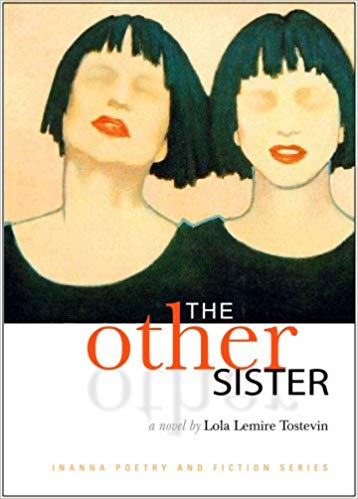
The Other Sister is a story of twins and, perhaps necessarily, a story of personal identity. It concerns Julia, a freshly admitted resident of Evenholme, a home for the aged. At 97, Julia is sound in her mind, but growing frail in her body. Her daughter, Rachel, has given her a laptop computer and so Julia reluctantly agrees to spend a little time each day typing her recollections on this new machine. One of the first people Julia meets at Evenholme is Mr. Wilkes who has the annoying habit of asking every new resident the same question: “Of everything you’ve experienced in your life, which event do you think affected you the most?” While Julia brushes him off, his question drives the novel, and we move along with Julia to the revelation of an answer.
Julia is particularly concerned for Lena, another resident who is not as sound in either her mind or her body. Lena sometimes drifts into the past and becomes unable to distinguish her recollections from her present world. As they converse, Julia discovers that Lena was a Mengele twin—a victim of Josef Mengele’s cruel experiments in Auschwitz. While Lena survived, her sister, Lili, did not. Lena believes that Lili died so that she could survive.
Lena’s story serves as a foil to Julia’s own account which she shares in dribs and drabs with her daughter, her granddaughter, Thea, and in greater measure with a fellow resident named Daniel. The dribs and drabs include a father who lost a leg to the Great War and lost his life to alcohol. There’s a suitor named Wilson, a junior partner in her father’s law firm, who loves her desperately but can’t have her, so marries her twin sister, Jane, instead. There are recollections of a trip to New York City to shop for clothes in anticipation of the wedding to Wilson. There, the twins and their mother witness a suicide: a woman jumps from the Flatiron building. There are Jane’s twin sons who lose their lives at sea during the Second World War. Throughout the narrative there is a tension between the blurring of the sister’s lives on the one hand, and their need to establish distinct identities on the other. This tension leads us to a final revelation which Julia shares with Daniel and leaves on her laptop as a testament for her daughter and granddaughter to discover after she is gone.
While the story is well paced, with a carefully crafted narrative arc, I find two things distracting. The first is the manner of the revelations. Although some of the past is recounted through italicized narrative, a good portion emerges through an annoying chatter. It might have made a better play. But I doubt it because the dialogue is stiff and reads more like a series of interviews designed to elicit information than a device to tell a story. And characters like Lena and a Hungarian burn victim named Gizi appear to speak with pure Anglo voices even though we are given to believe that they grew to adulthood in Eastern Europe and only came to Canada later in life. To illustrate, here is a sample of dialogue between Julia and Lena:
Why didn’t you tell her?
I don’t know. I didn’t want to share any information I didn’t have to. I have so few memories I can call my own any more. Did you tell her about Lili?
No. Only about my younger brother and sister.
What happened to them?
Relatives hid them in a Catholic convent in Budapest. They didn’t go to the camps.
Why do you think we’re lying about having twin sisters, Lena?
I don’t know. To protect them, maybe. They are safer if they don’t exist.
Perhaps more distracting are the narrative intrusions. With annoying frequency, Tostevin feels compelled to explain to the reader what the reader ought to be able to discern for himself. Below are some samples:
She sought in poems what she sought in her garden, a place in which she could identify and safeguard feelings.
Again:
Being part of Thea’s history did have a nice ring to it though. It gave Julia a place within a context larger than her own inconsequential life. Everyone made history each in their own small way, according to the cards they were dealt. What student had not looked for perspective and direction for their years ahead by looking back?
And again:
But because of Lena, facts now sprang from their historical and abstract contexts and translated themselves into the vivid experience of a friend who also happened to be a twin. Their backgrounds were different, but Lena and Lili had not suffered their fate only because they were Jewish, but because they were twins.
We don’t need the narrator to tell us what we can figure out for ourselves. While narrative intrusions sometimes work (think of Mordecai Richler’s Barney’s Version), more often than not that’s because the narrator is a distinctive character essential to the story.
I wonder if this impulse to explain things doesn’t arise from anxiety about being misunderstood or misinterpreted. But if the writing is to work, then the author has to let go of her fears and allow the story to reveal itself. Otherwise, she comes off sounding a bit like the teacher who teaches to the lowest common denominator. The best students grow bored and yawn, then turn to more interesting things.
** (out of 5)
